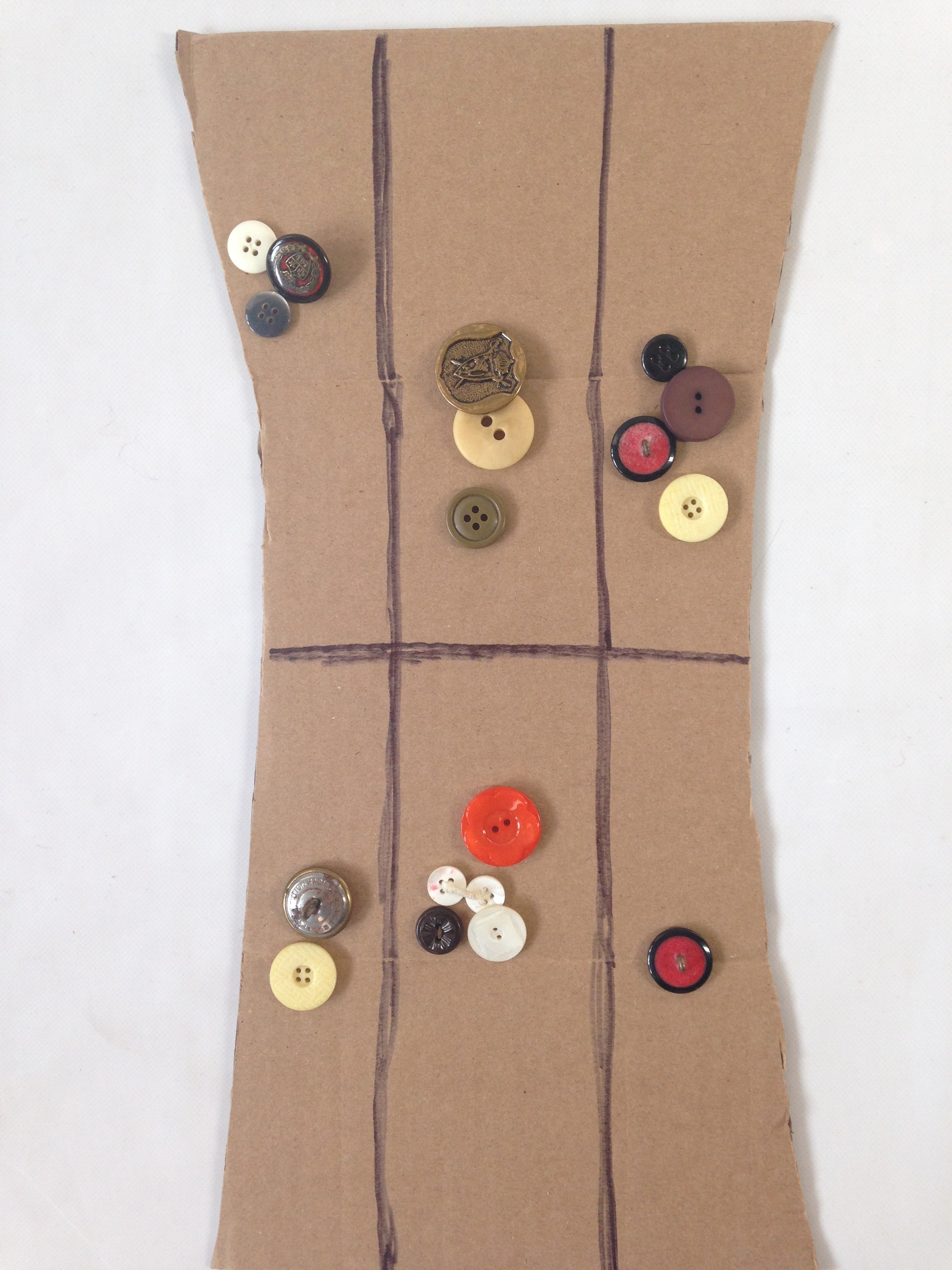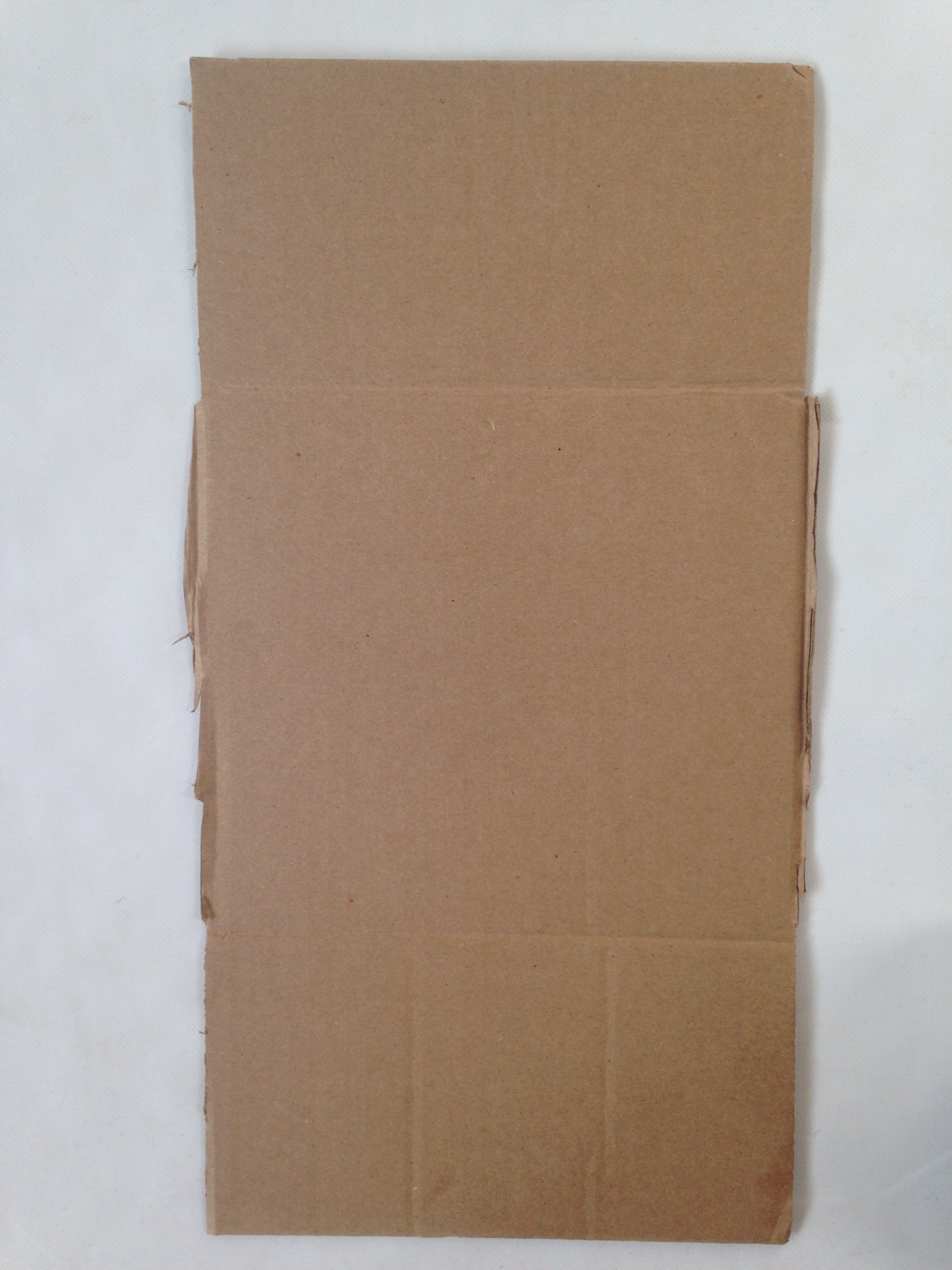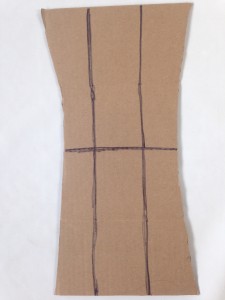The Luba, a Bantu-speaking people who live in Central Africa, mainly in the southeastern corner of the Democratic Republic of the Congo, archive their cultural identity using traditional form of art known as the “lukasa memory board.” The wooden board is a literal platform for capturing an important community memory. Artists start with a blank board then attach beads, shells and other available materials in traditionally metaphoric patterns. Those who can interpret the patterns — a group of revered scholars in a society known as Mbudye — understand them as a way to tell a story about a particular chiefdom, such as its major historical events, structures and philosophical beliefs. Mbudye use their substantial knowledge of the past of Luba society to interpret the memory boards in a way that teach lessons about issues important in contemporary society.
 THE LUKASA MEMORY BOARD GAME: BASIC VERSION
THE LUKASA MEMORY BOARD GAME: BASIC VERSION
A rapid-fire game of memory.
MATERIALS NEEDED:
- 3 pieces of cardboard, about 7″ x 15″ each
- A cup-full of little beads, coins, shells, popcorn kernels or anything you’d like to use for game pieces. (at least 100.)
- quick-thinking
PLAYERS: At least 3 players.
SUGGESTED AGES: 7 and up.
THE BASICS:
Two MBUDYE (interpreters) compete to remember the pattern of beads laid out on the board by the MULOPWE (the king).
Step 1: THE BOARDS
 The boards for your Lukasa Memory Board Game can be very simple. A rectangular piece of cardboard, approximately 7″ wide and 15″ long (real lukasa are smaller, about 5″ wide and 8″ long but we can use the extra space) — cut from a box would be ideal. You can also use any rectangular mat, folder or sheet of paper.
The boards for your Lukasa Memory Board Game can be very simple. A rectangular piece of cardboard, approximately 7″ wide and 15″ long (real lukasa are smaller, about 5″ wide and 8″ long but we can use the extra space) — cut from a box would be ideal. You can also use any rectangular mat, folder or sheet of paper.
 A traditional lukasa memory board is not rectangular, but shaped slightly like an hourglass. If you want to want to get fancy, cut your board into the shape of an hourglass.
A traditional lukasa memory board is not rectangular, but shaped slightly like an hourglass. If you want to want to get fancy, cut your board into the shape of an hourglass.
Divide your board into six sections.
Step 2: THE PIECES
 You can use any little things you find around the house for the game pieces The Luba used colorful beads and shells for their memory boards so default to those, but you may also use buttons, coins or even small pieces of paper. You need a least 100 beads or game pieces, so little beads that come in a bunch in an art kit would work just fine.
You can use any little things you find around the house for the game pieces The Luba used colorful beads and shells for their memory boards so default to those, but you may also use buttons, coins or even small pieces of paper. You need a least 100 beads or game pieces, so little beads that come in a bunch in an art kit would work just fine.
Step 3: PLAYING THE GAME
- Two players in each round will be MBUDYE. The third will be the MULOPWE (king).
- The MBUDYE cover their eyes. The MULOPWE lays out the pieces on the memory board. The Mulopwe chooses how many pieces to put into each section.
Each of the pieces represents a character in Luba tradition:
ONE => MBIDI KILUWE, THE HERO – In Luba lore he often is the hero in the stories portrayed on the memory boards – “the culture-bearer of kingship.”
TWO => NKONGOLO MWAMBA. THE ANTI-HERO – Appears in Luba tales as a violent and vile character.
THREE => THE BUFFALO: In Lukasa tradition associated with, says Wikipedia, “ambivalent power and secret potential.”
FOUR => THE TORTOISE: Associated with, according to PrimarySource.org, “the passage of time and secret knowledge.”
FIVE => THE SERPENT: Associated with violence or, if you don’t want your story to go that way, bad behavior.
SIX => THE CROCODILE: A wildcard. Associated with the dual nature of the Luba political structure.
When the MULOPWE says “go!” the MUBUDYE uncover their eyes. They can look at the board for five seconds, then cover their eyes again.
The MULOPWE hides his or her board.
When the MULOPWE says to go again, MUBUDYE uncover their eyes.
The MUBUDYE race to put the right number of beads into the correct sections of his or her own board to match the board of the MULOPWE, in order (top left to bottom right), calling the names out loud of the characters they represent.
The first of the MUBUDYE to get the pattern with the corresponding names of the characters right wins the round.
EXAMPLE:
On this board, the winning MUBUDYE would be the first one to call out the beads and place them on his or her board in order:
BUFFALO!
BUFFALO!
TORTOISE!
NKONGOLO MWAMBA!
SERPENT!
MBIDI KILUWE!
Best three of five or best five of seven wins. Winning MUDUDYE becomes the next MULOPWE.
Now of course in Luba tradition being one of the Mubudye is not a race and is not at all about competition. If you’d like to play a much more challenging, but much more creative version of the game, click here.






Comments are closed.